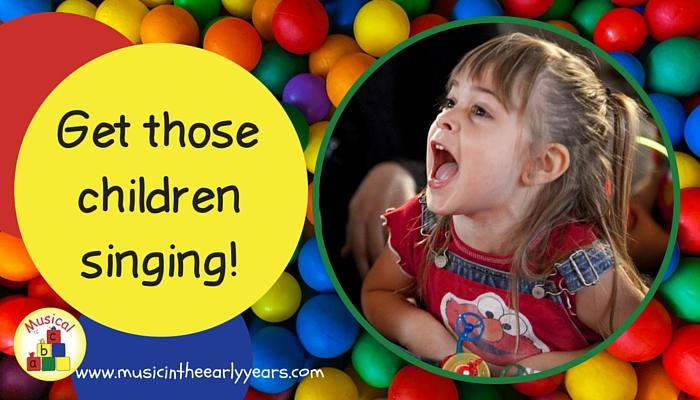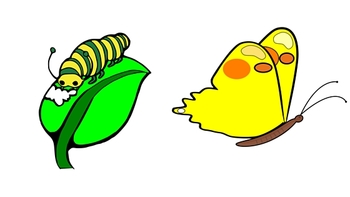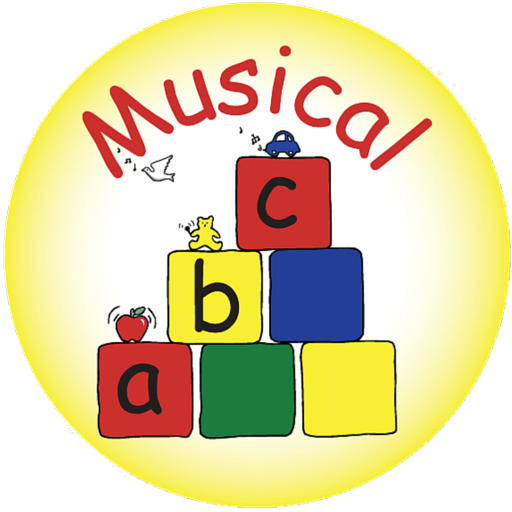Get those children singing!

Do you find that some of the children in your EYFS setting just sit there and don’t join in with the singing? How can you get more of those children to join in? Let's get those children singing!
Joining in with your current repertoire
All children need to learn well-known nursery rhymes but sometimes the singing of them can become a little flat. Giving the song a little twist could be all that's needed to get more children to join in. It could be singing the song with a change in dynamics (loud or quiet), using props, deliberately missing words out or adding actions/movements. Here are a few ideas for each:
Dynamics - Using Twinkle Twinkle Little Star
I sometimes tell the children we are going to sing 'Twinkle twinkle little star' as if we are singing to a baby. We start by singing quietly as if we are trying to send a baby to sleep; I usually find the children really concentrate on this part to sing the song quietly. I then contrast this with singing the song in a slightly louder voice as if trying to rouse the baby; I emphasise that we do not shout we just sing louder. I always find on this part more children will join in with the singing! Just make sure you are not encouraging shouting just a louder singing voice.
If you decided to do this you may like to use a teddy or baby doll so they have something to focus on whilst they sing.
Use props
Using a puppet, soft toy, stretchy fabric, parachute... for the children to interact with is also a good way to get the children singing. With the soft toy/puppet you can make the purpose of the activity for the children to sing to the toy; maybe make the toy do something funny or exciting when they sing a particular part!
E.g. Baa baa black sheep (using a sheep puppet or soft toy)
- Tell the children if they sing the question to the sheep: Baa baa black sheep have you any wool? The sheep might move.
- They sing: Baa baa black sheep have you any wool?
- You respond by singing the reply 'Yes sir, yes sir, 3 bags full' and also make the puppet dance, nod its head.... at the same time.
Deliberately missing words out!
Sing through well known songs and miss out the rhyming words, numbers, names... for the children to fill in. This is also great for when you are introducing a new song; I talk about this more further down.
Actions and Movement
I have found that giving a song a dynamic element also encourages children to join in. When I sing the well-known song '1,2,3,4,5 Once I Caught a Fish Alive' with the children we act out the rhyme; we sing the song using our fingers and dramatic expressions to tell the story. I love watching the children's faces as they express the fish biting their finger.
Learning a new song
When I introduce a new song I first sing it all the way through so that the children can hear it. I then select one part that I’m going to teach them in that introduction. I NEVER try to teach the whole song in one sitting. I have the disadvantage of only working with the children once a week whereas in most settings you should be able to develop a song over a number of days.

Here's how I approach teaching a Tiny Caterpillar on a Leaf. Please click here if you would like the words and tune (me singing)
How I would teach it:
- Sing the song all the way through.
- Then encourage the children to join in with the words and actions: wiggle (wiggle body at the same time), munch (make hand make a snapping motion), spin (spin hand around) and flap (flap arms up and down). Having an action makes these easy to learn.
- I would probably also do this for the second and third introduction; by introduction I mean each time you sit down to sing it with the children.
The next stage would be teaching the first two repetitive lines:
'There’s a tiny caterpillar on a leaf, wiggle wiggle, There’s a tiny caterpillar on a leaf, wiggle wiggle,'
- Teach these through an echo: you sing the first line and then they echo back. Do this 3 or 4 times.
- Then you continue singing the rest of the song and the children can join in with the action words they have learnt on the other introductions.
Then follow the same method for teaching the remaining words: two or three lines taught through an echo.
To keep the children’s attention ideally you shouldn't spend more than 5 minutes on each introduction.
I find the above works so give it a try and please let me know how you get on!
Unfortunately, you will always find there are some children who will rarely join in. Although...
you may find they try the song you have been singing at home; it’s worth asking their parents/carers if they ever hear them singing at home. I know from experience this definitely happens. Some of the shyest children I have taught do this. It is also exceptionally rewarding to see some of them overcome this hurdle and begin to join in during the music time.
I hope you find there are some ideas above that you can use in your setting; I'd love to hear your experiences!
Happy music making
Categories
- Celebrations (8)
- Composing Music (1)
- Instruments (6)
- Listening to music (6)
- Live Music (1)
- Mathematics (3)
- Mathematics: Number (2)
- Mathematics: Shape, Space and Measure (1)
- Music Area (2)
- Musical Elements (1)
- Music Time (11)
- Nursery Rhymes (3)
- Outdoor Music (1)
- Performing (2)
- PDP (5)
- Props (10)
- Routines (2)
- Schemas (2)
- Seasons (5)
- Senses (1)
- Sensory (3)
- Singing (13)
- The Importance of Music in the Early Years (5)
- Topics and Themes (8)
- Top Tips (1)
- Vocal Play (1)
- Vlog (4)
- About Anne (1)


0 comments
Leave a comment